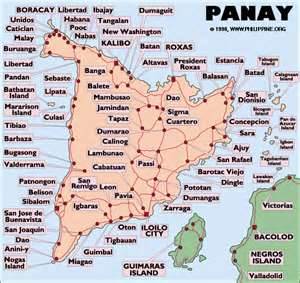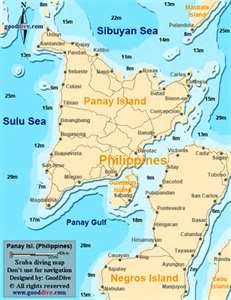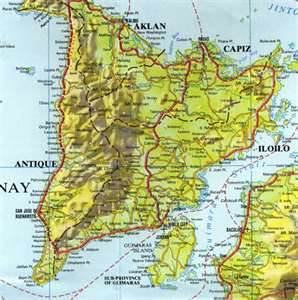
-
МјРЇСІИёСЖШИМі
-
 И№ОЫ КИОЫ Йъ ЗЛЦЎЧЯБт~ ИЎСЖЦЎ ПЙОрБюСі
И№ОЫ КИОЫ Йъ ЗЛЦЎЧЯБт~ ИЎСЖЦЎ ПЙОрБюСі 89,459
89,459 -
 [ЧЪИЎЧЩ ММКЮ] ФЋИ№ХзНК ПЉЧр 100Йш СёБтБт
[ЧЪИЎЧЩ ММКЮ] ФЋИ№ХзНК ПЉЧр 100Йш СёБтБт 48,911
48,911 -
 ИЖДвЖѓ НУГЛ - ИЎРп АјПјСЄКИ. (ЛчСј 16Рх ЦїЧд)
ИЖДвЖѓ НУГЛ - ИЎРп АјПјСЄКИ. (ЛчСј 16Рх ЦїЧд) 30,790
30,790 -
 ММКЮРЧ СіПЊСЄКИ15,531
ММКЮРЧ СіПЊСЄКИ15,531 -
 ИЖДвЖѓ БйБГ - ЕћАЁРЬЕћРЬ ПЉЧр СЄКИ14,341
ИЖДвЖѓ БйБГ - ЕћАЁРЬЕћРЬ ПЉЧр СЄКИ14,341 -
 [ЧЪИЎЧЩ ММКЮ/ИЗХК] ШЃХк МїЙк ПфБн Йз СЄКИ13,319
[ЧЪИЎЧЩ ММКЮ/ИЗХК] ШЃХк МїЙк ПфБн Йз СЄКИ13,319 -
 КИЖѓФЋРЬРЧ И№Еч И№НРРЛ КММі РжДТ ЛчСјУИ.13,132
КИЖѓФЋРЬРЧ И№Еч И№НРРЛ КММі РжДТ ЛчСјУИ.13,132 -
 ИЖДвЖѓ БйБГ - ЦХЛѓЧб ЦјЦї ПЉЧрСЄКИ12,832
ИЖДвЖѓ БйБГ - ЦХЛѓЧб ЦјЦї ПЉЧрСЄКИ12,832 -
 [ММКЮ-ЙшМБТјРх] МБЙкШИЛч РќШЙјШЃПЁПф~12,447
[ММКЮ-ЙшМБТјРх] МБЙкШИЛч РќШЙјШЃПЁПф~12,447 -
 ИЖДвЖѓ СіПЊ(ПЁИЃЙЬХИ -ИЛЖѓХз)РЧ СіЕЕ/ЧбБЙ РННФСЁ/МюЧЮИє12,114
ИЖДвЖѓ СіПЊ(ПЁИЃЙЬХИ -ИЛЖѓХз)РЧ СіЕЕ/ЧбБЙ РННФСЁ/МюЧЮИє12,114
Panay Island Map

Panay (/pəˈnaɪ/; Tagalog: [pɐˈnaj]) is an island in the Philippines located in the western part of the Visayas. Politically, it is divided into four provinces: Aklan, Antique, Capiz, and Iloilo, all in the Western Visayas Region. It is located southeast of the island of Mindoro and northwest of Negros, separated by the Guimaras Strait. Between Negros and Panay Island lie the island-province of Guimaras. To the north is the Sibuyan Sea and the islands of Romblon; to the southwest is the Sulu Sea and the Panay Gulf.
The island has many rivers including Akean, Banica, Iloilo, and Panay.
Panay is the setting of the famous legend of Maragtas, which chronicled the arrival of the Malay race to the Philippine islands.
The island lent its name to several United States Navy vessels named USS Panay, mostly famously the one sunk in 1937 by the Japanese in the Panay incident.

History and legend
Folkloric legends recorded in the Maragtas by Pedro Monteclaro say ten Bornean datus landed at a site now known as San Joaquin town in Iloilo province. They purchased Panay from the Ati, cultivated the land, and renamed the island Madya-as. They divided it into three communities: Irong-irong, Akean (which includes the Capiz area), and Hamtik.
Capiz, which was part of Aklan in pre-Spanish times, was one of the early settlements of the Malayas, centuries before the coming of the Spaniards to the Philippines. It was part of the Confederation of Madjaas, formed after the purchase of Panay by the Bornean datus from the Negrito king named Marikudo.
When the Spaniards led by Miguel López de Legazpi came to Panay from Cebu in 1569, they found people with tattoos, and so they called it Isla de los Pintados. How the island itself came to be called Panay is uncertain. The Aeta called it Aninipay, after a plant that abounded in the island. Legend has it that Legazpi and his men, in search of food, exclaimed upon the island, Pan hay en esta isla!. So they established their first settlement in the island at the mouth of the Banica River in Capiz and called it Pan-ay. This was the second Spanish settlement in the Philippines, after San Miguel, Cebu.
Panay received its present name from Spanish officials who named the island after one of its earliest settlements, the town of Pan-ay in the province of Capiz. It was, however, once referred as Aninipay by the indigenous Aetas and later Madia-as by the Malay settlers who first arrived in the island in the 12th century.

Even though Panay is a microcosm of everything the Visayas has to offer, the long white-sand beach at Boracay is all that many visitors to the region, or for that matter the country, ever see. The rest of the region keeps a low tourism profile, which helps explain the appeal of tropical Guimaras - just a short commute from the pleasant and lively regional capital of Iloilo City. Panay's little-explored interior is ringed by a rugged coastline to the south and west and a more domesticated one, dotted with impressive Spanish churches, to the north and east. Adventure sports (particularly mountain biking, trekking, kayaking and rock climbing) can be arranged out of Iloilo City.
The amazing Ati-Atihan Festival, held in Kalibo in January, is the most famous fiesta of its kind in the Philippines. Much of Panay's festive tradition can be traced back to its indigenous tribal groups, namely the Ati and Ata. There are communities of both groups on the mainland.
- ЁЄ
- ЁЄ
- ЁЄ
- ЁЄryWvMVxeet
- ЁЄryWvMVxeet
- ЁЄryWvMVxeet\'\"\\(
- ЁЄryWvMVxeetщ\'\"\\(
- ЁЄryWvMVxeet
- ЁЄryWvMVxeet
- ЁЄryWvMVxeet
- ЁЄryWvMVxeet
- ЁЄryWvMVxeet
- ЁЄryWvMVxeet
- ЁЄryWvMVxeet
- ЁЄryWvMVxeet















 ЧЪРкДхФФ ОпАЃЛѓДу ПРЧТ
ЧЪРкДхФФ ОпАЃЛѓДу ПРЧТ 12ГтПЌМг МвКёРкИИСЗ 1РЇ
12ГтПЌМг МвКёРкИИСЗ 1РЇ
 ГЛАд ИТДТ ОюЧаПј УЃБт
ГЛАд ИТДТ ОюЧаПј УЃБт
 ИЎОѓ ЧаБГ ЙцЙЎБт
ИЎОѓ ЧаБГ ЙцЙЎБт
 СжИЛПЁ ГЛАЁ ОЕ КёПыРК?
СжИЛПЁ ГЛАЁ ОЕ КёПыРК? УжАэАЁМККё РЬКЅЦЎ СёБтБт
УжАэАЁМККё РЬКЅЦЎ СёБтБт
 ЧіСіПЁМЕЕ ЧЪРкДхФФ!
ЧіСіПЁМЕЕ ЧЪРкДхФФ! ЧіСіПЁМ АЁДЩЧб
ЧіСіПЁМ АЁДЩЧб









 ЧЪРк ЦЏБо Ч§ХУ! ФСНУОюСі МКёНК
ЧЪРк ЦЏБо Ч§ХУ! ФСНУОюСі МКёНК
































